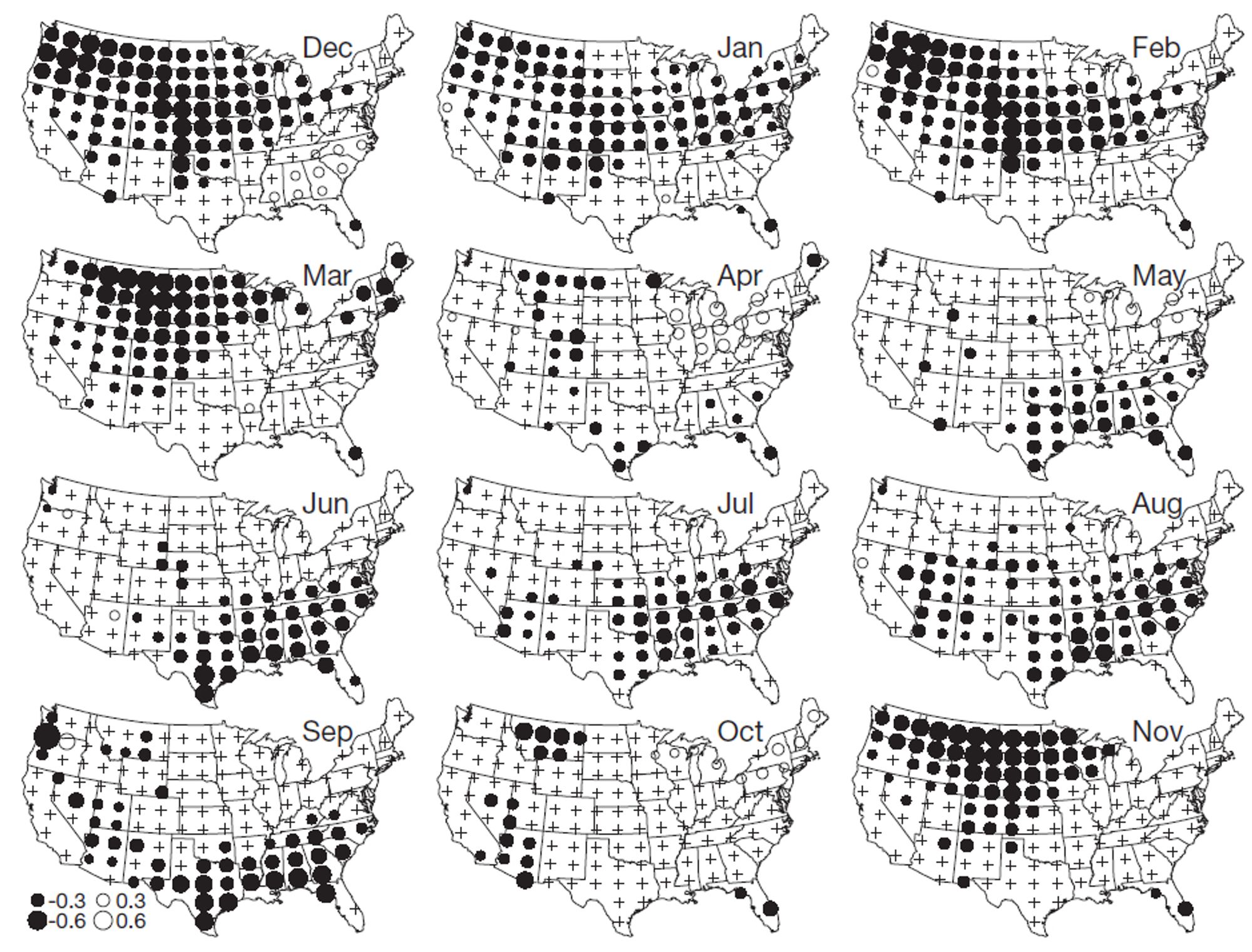
Good summary by Gavin of this recent article. The only way that more cold extremes could happen in a warming climate is for the warming to be accompanied by increased interdiurnal variability (such as in the bottom figure below). That's both unlikely and atypical, at least in the mid-latitudes.
The reason I said atypical is that these results for the USA show that most places experience a decrease (filled circles) or no change (plus signs) in the standard deviation of daily temperature with an increase in mean temperature. www.int-res.com/abstracts/cr...

There are some midlatitude areas where a drying trend led to decreases in overnight minimums/increases in frost, but I think that was only true for smallish levels of warming and gets overwhelmed by the warming trend eventually.
